- Home
- Helping Wildlife
- Important Rescue Info!
- Found A Baby Squirrel?
- Found A Juvenile Squirrel
- Found Adult Squirrel
- How to Rescue Wildlife
- Handling Wildlife
- What About Rabies
- Dead Wildlife
- Find a Rehabber
- Make a Donation
Every dollar donated to Squirrelmender Wildlife Rehabilitation goes directly to the care of wildlife providing food, medical supplies and housing for the hundreds of animals that come through here.
Donate NOW
Squirrelmender Wildlife Rehabilitation
330 Charro AvenueAddress
Thousand Oaks, CA
91320
A tax-exempt, non-profit permitted by the California Department of Fish and Game.
Phone:805-498-8653
E-mail:
We also accept online donations through Network for Good.

Thousand Oaks, CA 91320
phone: 805-498-8653
cell: 805-338-0481
Emergency Procedures If You Found A Juvenile Squirrel
|
Juvenile squirrels just look like small squirrels - they have bushy tails - and all the features of adult squirrels (minus some common sense). Juvenile squirrels are usually seen in the spring and fall, but in climates like Southern California the "seasons" can almost overlap. The most common injuries of juveniles include:
And some juveniles are orphaned when mom gets hit by a car or killed by another animal. Head trauma can be caused by a car hit, a fall or shaking by another animal. The symptoms of head trauma are very similar to those of poisoning and the quicker the animal can be seen by a rehabilitator the better. Some symptoms of head trauma are: listing to the side - walking in circles - looking and acting dizzy - blood from nose or mouth. Some symptoms of poisoning are: listing to the side - walking in circles, looking and acting dizzy - blood from nose or mouth.
If the Juvenile squirrel is hurt: Leather gloves offer some protection but a good bite will puncture leather gloves or at least bruise you. Other trapping and capturing techniques - a box or a cage. Some small animal cages detach from the base and are useful for quickly placing over an injured animal - then a flat cookie sheet can be slid under the animal. Place soft cloths on the base of the cage and slip the cookie sheet out - landing the squirrel in the base. Throw a towel over the squirrel and scoop it up and place in a box or cage. Call a rehabilitator for assistance or advice. Squirrels calm down in the dark so cover the cage with a cloth that will make it dark within. A squirrel may put up a valiant fight if it senses harm and a need to escape. That said - they also seem to be very aware when someone truly is there to help.
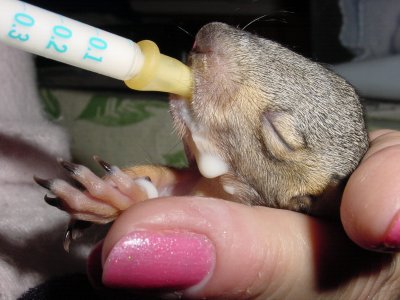 |
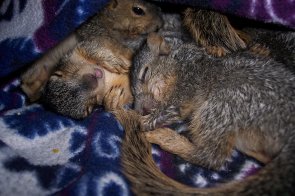 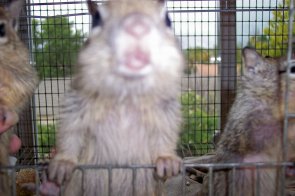 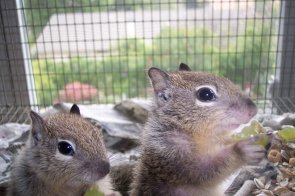 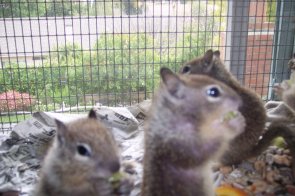
|